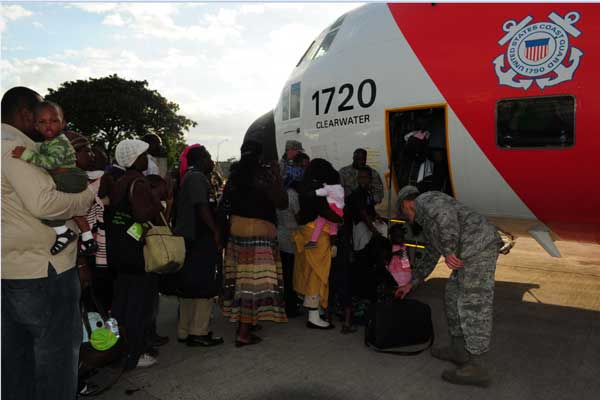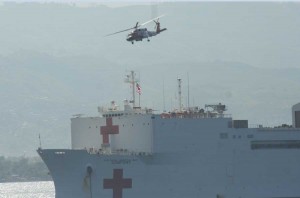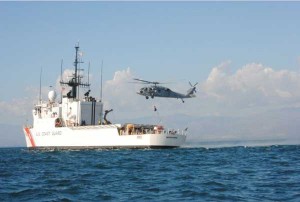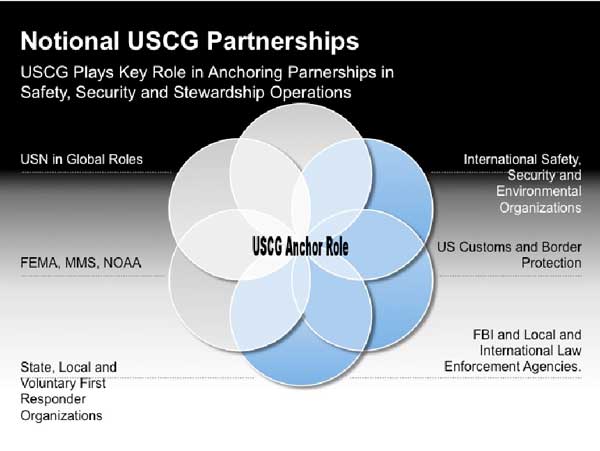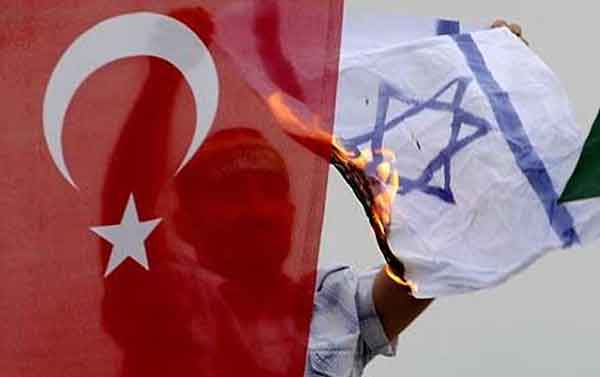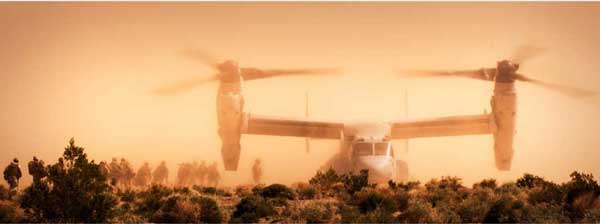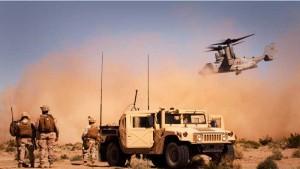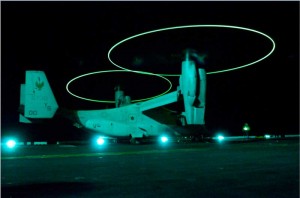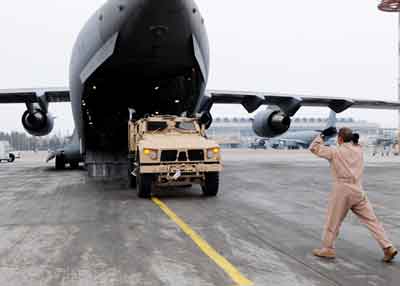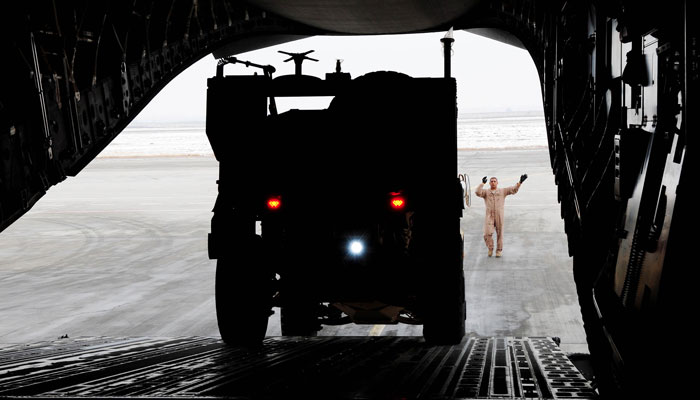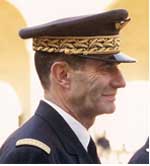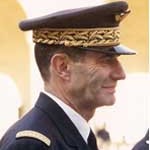SLD visited Airbus Military during the third week of May 2010 as part of the Trade Media Briefings 2010. Senior Military Airbus officials provided the media with programmatic overviews and opportunities to visit final assembly lines. Recently we posted an overview of our visit to the CN-235 and C-295 Final Assembly lines, which highlighted production of two of the USCG Ocean Sentry aircraft.
***

In total, Airbus gave four major briefings on the A330 MRTT program. Antonio Caramazana, the head of Airbus Military Derivatives, gave the overview briefing. Eduardo Cuadrado Garcia, chief test pilot, summarized the flight test program. Miguel Angel Morell, Senior VP for Engineering and Technology, highlighted the challenges of adapting the civilian A330 to a tanker. And finally, Richard Thompson, Senior Vice President for Customer Services, discussed the service model underlying the A330 MRTT.
Rather than trying to summarize all of the briefs and to provide a sense of the state of the program, excerpts from these briefings, as well as comments by the principals, are included in below.
Several points are worth highlighting regarding the state of the program.
- First, the tanker program is a relatively mature program, with the A330 MRTT virtually finishing both civilian and military certifications. The Australian tanker, which is very close to the configuration desired by the USAF, is nearing final delivery.
- Second, the flexibility of the aircraft is a major reason why customers with smaller tanker fleets would gravitate to the A330 tanker. Refueling is provided through storage in the wings, allowing the fuselage to be used for either cargo or passengers. Indeed, no modifications were made on the original aircraft to meet the basic fuel load requirements.
- Third, the ability of the tanker to be refueled while in the air gives the aircraft greater range, durability and allows for the tanker to be parked on station if equipped with crew rest areas. For example, the Australian tanker is configure with an in-air refueling capability.
- Fourth, the boom for delivering fuel is a well-developed capability with a number of advanced capabilities, which allow operation of the aircraft to refuel a wide-range of aerial vehicles.
The following slide show provides some of the data provided by Antonio Caramazana. Highlights of the presentation provide insights into the basic configuration of the aircraft, a customer update, and some interesting comments on the engineering and industrial solutions for working with partners.
Basic Configuration of the Aircraft
In total, the A330-200 has in its internal fuel tanks up to 111 tons of fuel. So this gives the A330-200 the basic platform adapted for the tanker capabilities, so we maintain at the same time the cargo and the passenger capabilities intact […] So the passenger capabilities are maintained so we can transport up to 300 troops. Depends very much on the seat pitch selected. For instance, in the case of the FSTA with 34 inches seat pitch, in the aircraft we can install 291 passengers. So the passenger capability is totally maintained, and at the same time, we maintain the cargo capability up to 45 tons, without compromising either the fuel tank content or the passenger transport or the cargo transport.
On top of that, we have as well capabilities for medical evacuation by removing the seats on the main deck and installing the medevac stretchers. And depending on the configuration and depending on the medical situation that you want to allow, you can install up to 150 stretchers. In the case of the FSTA, maintaining part of the cabin for medical stretchers and part of the cabin for passengers – we’ve got up to 40 stretchers.
The boom program started in early 2000. We did the development, as well. We did a ground test rig with a full boom capability located in a tower that you probably have already seen, or if not, you will see in the visits in the factory. And after that we moved the boom into the A310 before installing it into the A330, so all these phases – the initial engineering development, the development of the ground test rig with the tower in the A310 – have served the purpose of getting to the installation in the A330 with a mature boom. All that we are doing on the A330 is to fine-tune, improve, and enhance what has been done during these ten years of boom development.
As well, together with the boom, we‘ve got the Fuselage Refueling Unit. It’s coming from Cobham as well, and this combination is also possible – to have boom and FRU. There are some other combinations in which you can have a boom only or FRU only. But as well there is the option, and the design has been done in such a way that you can combine and install both together – the boom and the FRU.
Another capability that we have included is the enhanced video system. In general this is a video system for controlling the panoramic situational awareness of the receivers. And, as well, enhances a three dimensional video system for the boom operation.
Another modification to the MRTT is the modification in the cockpit area. What we have done is to enlarge the cockpit area to move out the bullhead of the cockpit in order to install in the rear part of the cockpit a mission console. And we’ve got in there the two solutions – a dual mission console when we’ve got the aircraft configured with boom, for boom operator and mission console operator or a single position mission console in the case of the configurations that do not integrate the boom – that are pods and FRU only case, for instance of the UK FSTA.
Customer Update
In terms of the Australian MRTT, the total number of aircraft that were contracted were five. This was the first contract that we got for the A330 MRTT. The configuration is a configuration including boom under-wing pods, UARRSI for being a receiver defensive aid subsystems. And it has GE engines. The total number of passengers in this particular case – they selected a two class configuration – [is] 270 passengers.
The situation of the MRTTs is that we are at the final stages of the development process. The certification is very close to completion, and we’ve got serial number one and serial number two in Spain under the final stages of the flight test campaign. And the number three is in the latest stages of conversion in Australia.
The plan that we’ve got for Australia is to deliver this year serial number two and serial number three. And already all the details to get up to the acceptance and to the release into service in Australia have been negotiated with the Australian DMO and the Australian air force, and that is the situation there.
Number four, we’ll test our conversion early June. The plan is to fly the aircraft number four that is sitting here in Getafe – to fly to Australia on the first week of June, and therefore, as the time that the serial number three conversion is being completed, we will be preparing the aircraft for starting the conversion.
We signed a contract with UAE for three aircraft. The aircraft number one is under conversion. We started the conversion early this year, and the conversion is progressing in accordance to plan. This is a conversion that the conversion process is getting mature, so the conversion is going pretty smoothly. The configuration of a the UA MRTT is boom, two under-wing pods, UARRSI and is with Rolls Royce engines.
For the FSTA, we’ve got a total order of 14 aircraft, 7 of them are two-point tankers with under-wing pods only and 7 of them are three-point tankers with FRU as well. And it has a Rolls Royce engine. As I have mentioned before 291 passengers in a single class, 34 inches seat pitch with medevac capability.
In the case of Saudi Arabia, we received an initial order of three aircraft, and we have received last year as well the second order for the additional three aircraft, so in total, we’ve got six aircraft on order, and the number one is in conversion in Spain. The structural conversion is about to be finished by the end of May, and we will be starting the systems conversion in June. So the conversion is as well pretty well underway. The configuration is similar to the Australian configuration, with boom, two under-wing pots, UARRSI and GE engines
And as well, we are incorporating the Universal Aerial Refueling Receptacle Slipway Installation (UARRSI) onto the A330 as well as a receiver, and these will provide even longer-range mission capabilities.
Comments on Engineering and Industrial Solutions
The other important thing that we have not focused on, but I think it is time that we focus on as well, is the engineering and industrial solution. And I’m going to focus on the industrial solution. We have not only, you know, proven that the conversion is possible in Spain under our premises, very close to our individual resources, but as well we have proven that the conversion can be done externally. We have done that in Qantas in Australia. In Australia MRTT-2 was converted in Australia. Right now MRTT-3 is at the latest stages of the conversion. So this means that these processes have been already proven for Qantas, and we are in the process as well of taking the lessons learned of the transfer of this industrial capability into Australia to do exactly the same for the FSTA. As you know, we have already mentioned externally to you and externally to our customer base that we’ve got as well a commitment to convert 12 FSTA aircraft in Cobham Aviation Services. Right now, with the lessons learned from the transfer of conversion from Spain into Australia, we are applying all the lessons learned for the UK MOD
Richard Thompson provided some additional comments with regard to the industrial or service approaches associated with the tanker program. With regard to the Aussie tanker, Thompson added:
We’re ramping up to deliver the first of the MRTT’s, the KC-30A to Australia, our launch customer, and I’ve recently just come back from Brisbane and the RAAF base there in Amberley and the facilities are looking good. They’re all ready to go – 33 squadrosn all geared up anxiously waiting for the first plane to arrive and they’re all fired up. The DMO people who are at the base who represent the customer, the end user, 33 squadrons and Qantas Defense Services with whom a couple of weeks ago we signed the contract which is effectively a through-life support agreement for the next 22 years. QDS will be the prime contractor delivering that through-life support in front of the customer. They have their offices there in Amberley, as well, and they’re all ready to go and we will be supporting them locally in Australia through our subsidiary, Australian Aerospace, who will be doing some specific work packages on behalf of QDS and also remotely back from here in Madrid with all our technical support and other services that we will provide QDS.
We’ve hit a major, major milestone in the sense that we’ve actually started delivering some real hardware to the Australian Airforce – the first piece of hardware that we’ve actually delivered, the first of some 500 pieces of support – ground support and test equipment, and the first of some 4,000 spare items that we will be delivering to the Commonwealth over the next few months. It’s a complex process but we’ve put it to the test, we’ve done the first deliveries and it all works. And so, good news, and everybody’s keen, ready to go.
We will also be placing there a total of six field reps, of which two will be ours. We will be placing those two field reps at Amberley over a three-year period to ensure a smooth entry into service.
———-
*** Posted on June 20th, 2010


